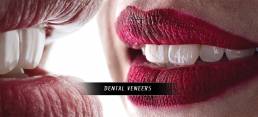CLEAR ALIGNERS
WHAT IS MALOCCLUSION?
Malocclusion is an incorrect ratio between the teeth, when the two dental arches are misaligned with each other. ( Clear Aligners ) There might be different types of malocclusion: crowding ,
(a lack of space for the teeth within the jaw) , underbite (when your lower teeth and jaw protrude in front of the upper teeth). spacing (when there’s a gap between the teeth
so called diastema), and more.
You can read about different malocclusion types in “Treatable Cases”, and also check the successful treatment cases for various malocclusion types in our orthodontic blog Clear Aligners.
WHAT ARE THE BENEFITS OF STRAIGHT TEETH?
The benefits of having straight teeth are much more than a confident smile. You will get healthier teeth and gyms, therefore, with proper brushing and flossing, you are avoiding periodontal problems, such as tooth decay and gum diseases in the future. Straight teeth also affect the way you chew the food, therefore you have a better digestion. Properly aligned teeth can also eliminate the issues that can be caused by a wrong bite, speech problems or chewing perplexity, jaw troubles, and extensive wear on the tooth enamel.
WHAT’S THE DIFFERENCE BETWEEN ALL THE DIFFERENT TYPES OF BRACES?
As a matter of effectiveness, there is no considerable difference between the types of orthodontic braces, as they were all designed for the teeth straightening purpose. It’s only a difference of the treatment time, price and the condition of your teeth. To know more, you might be interested to see the comparative research of aligners, and get more facts about aligners from our patients.
HOW DO THE ALIGNERS STRAIGHTEN TEETH?
During your treatment you will be supplied with a set of aligners, depending on your particular case. Each aligner will make 0.33mm adjustments to the positioning of your teeth as planned by your orthodontist . When aligners are placed on the teeth, they gently shift gradually from their current position, day by day. You will wear each set of eon aligners for 2 weeks before the next stage.
WHAT ARE THE CLEAR ALIGNERS BENEFITS IN COMPARISON WITH METAL BRACES?
In brief, braces apply a pull force that gradually shift teeth into place, and aligners use a push force to rotate your teeth. Each aligner you will be wearing, makes a smooth, very mild teeth rotation, more preferable for adults, without any gum bleeding and pain, common for metal braces.
WHAT IS CLEAR ALIGNER MADE FROM?
Clear Aligners is made from medical grade, FDA approved, polyurethane material that has a longer active force, facilitating teeth movement.
HOW LONG DOES AVERAGE TREATMENT TAKE?
Times vary depending on each case, but the average treatment time with clear aligners is 13 months. Once your orthodontic treatment is over, you will wear a retainer at night for a short while.
HOW MUCH DOES CLEAR ALIGNER COST?
Aligners treatment prices vary, depending on the case. We offer four packages: Adjust, Lite, Full and Unlimited packages. To find out how much teeth braces cost for you, fill the form and we will consult you about the average prices and the duration treatment.
DO I NEED A RETAINER AFTER ClEAR ALIGNER?
Your teeth might have a tendency to relapse slightly at the end of your treatment. We will provide you with a retainer aligner at the end of your treatment period that we recommend you wear for a period of 3 to 4 weeks afterwards to discourage any unwanted movements.
HOW OFTEN SHOULD I WEAR MY ALIGNERS?
The more you wear clear braces, the better the results. Our patients aim to wear aligners for at least 20 hours a day, removing them only when eating, brushing and flossing.
HOW SHOULD I CLEAN MY ALIGNERS?
Cleaning Aligners is easy: use a soft toothbrush and water, to prevent unnecessary odor and possible staining, once a day, while your regular teeth brushing. Check for more tips about aligners cleaning in our blog.
MY DOCTOR RECOMMENDED ‘ATTACHMENTS’ AND/OR ‘IPR’. WHAT ARE THEY?
Attachments and IPR are common dental practices that help your treatment progress. In some cases, doctors perform movements on smaller teeth, which are often too small to allow for enough grip. Here, attachments can help the aligner generate enough force to enact the movements. These small pieces of enamel-colored composite are affixed to the teeth , then gripped by the aligners. IPR, short for interproximal reduction, is performed when a dentist wants to create a bit of space between teeth to enable movements by gently flattening contact surfaces.
WILL WEARING ALIGNERS AFFECT MY SPEECH?
No, Aligners are only 0,3mm thin, and each aligner is customized for your treatment plan, so it will not change the way you speak.



